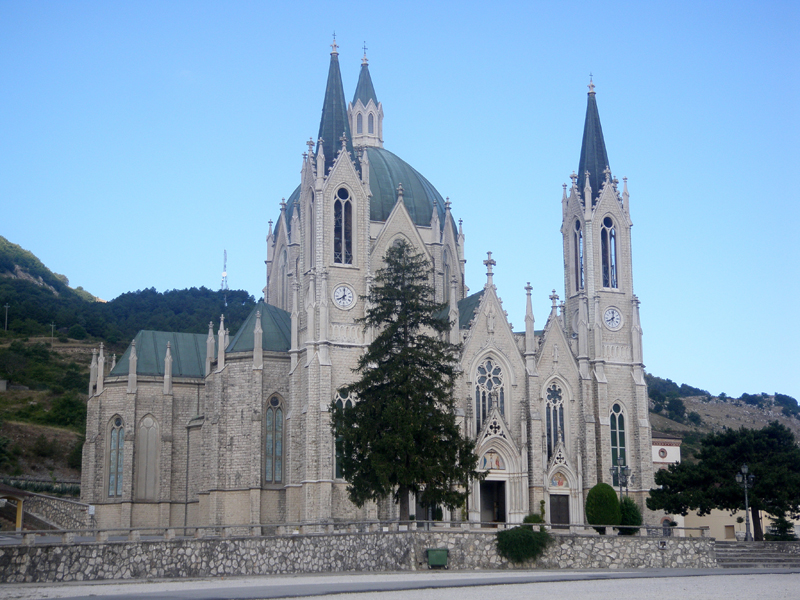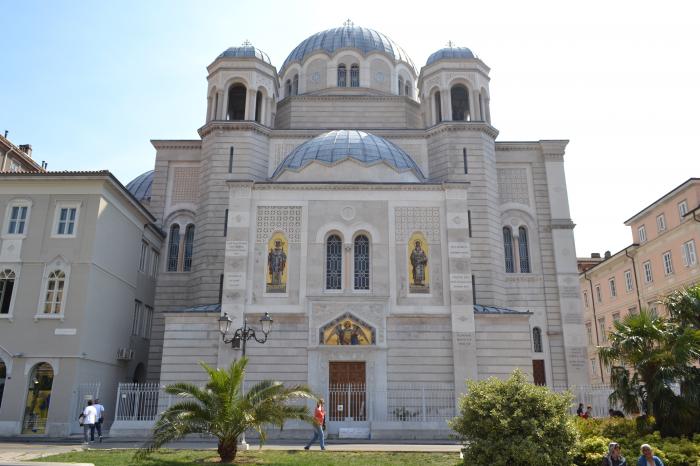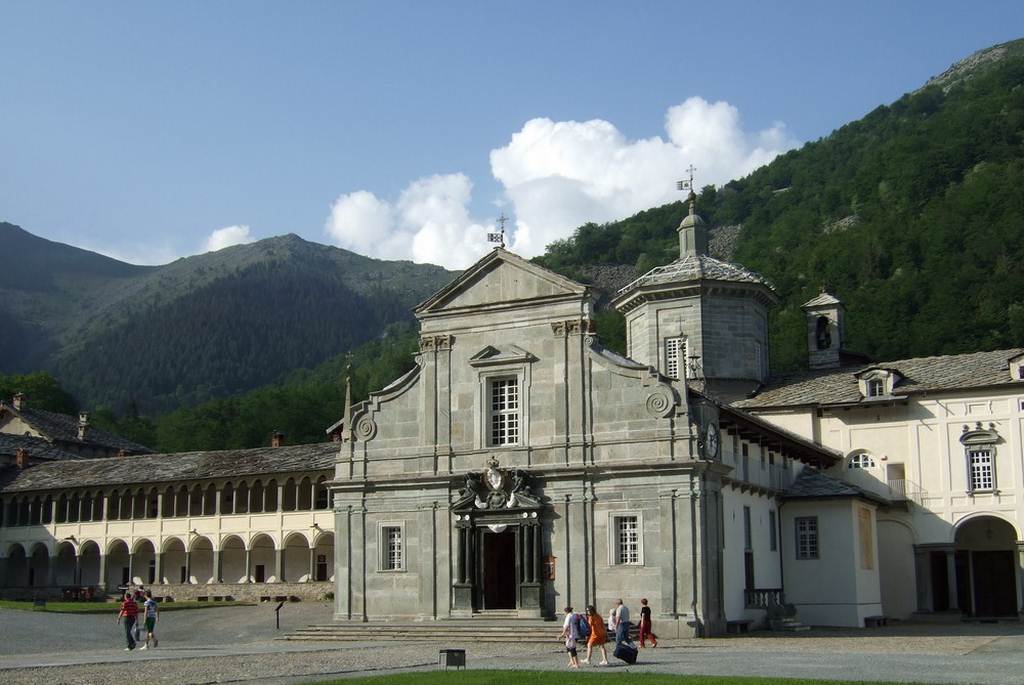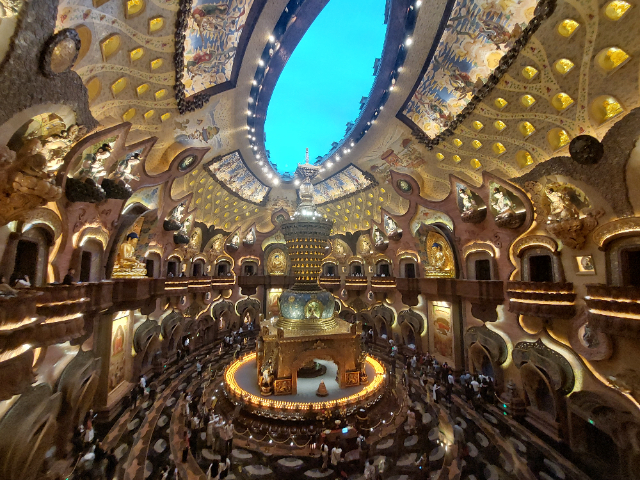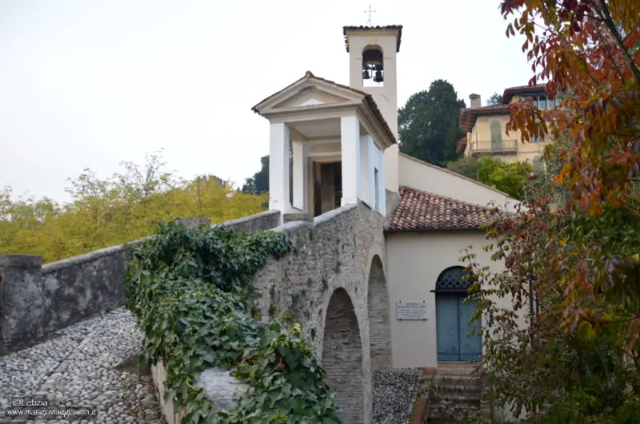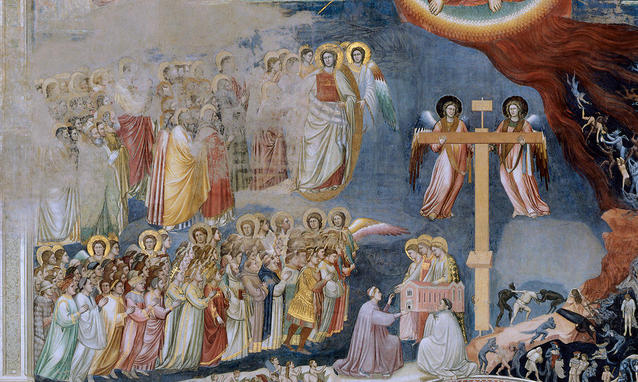Immense structure that literally juts out of the mountain. The shrine was erected in honor of Our Lady of Sorrows, who made her first apparition on March 22, 1888, at Cesa Tra Santi in Castelpetroso.
Fabiana Cicchino was the peasant girl who first saw Our Lady, then the apparition occurred again in the presence of her friend Serafina Valentino. Soon news of the apparition spread through the village and, despite initial skepticism on the part of the population, the first pilgrimages to the site, where a cross was placed, began.
The news reached the then Bishop of Bojano, Francesco Macarone Palmieri, who, on September 26, 1888, wanted to personally ascertain what had happened. He himself benefited from a new apparition, and at the same spot a spring of water sprang up, which later turned out to be miraculous.Toward the end of 1888, the miracle occurred that gave birth to the grandiose project of the Shrine: Carlo Acquaderni, Bojanese director of the magazine "The Servant of Mary," decided to bring his son Augustus to the site of the apparition. Augustus, 12 years old, was ill with bone tuberculosis but, by drinking from the spring of Cesa Tra Santi, he was totally cured.
In early 1889, after a succession of medical examinations, the miracle was proclaimed. Acquaderni and his son returned to the site again and witnessed the Apparition for the first time. Hence the desire to thank Our Lady and the drawing up of a plan, proposed to the Bishop, to build a shrine in honor of the Virgin. The Bishop agreed, and fundraising began to erect the structure. The person appointed to design the work was Eng. Guarlandi of Bologna.Guarlandi designed a majestic structure, in Gothic Revival style, initially larger than the present one. It took about 85 years to complete: the foundation stone was laid on September 28, 1890, but it was not until September 21, 1975, that the consecration took place.
In fact, the first years to follow were years of work, also considering the fact that it was not easy to get to the building site. Unfortunately, however, starting in 1897 a series of events followed that slowed and blocked the construction. First the eonomic crisis, then the death of Bishop Palmieri and the skepticism of his successor that blocked the construction, then the war, in short, they were difficult years.
Fortunately, offerings resumed, especially from Poland, and in 1907 the first chapel was inaugurated.In 1973 Pope Paul VI proclaimed the Immaculate Virgin as patroness of the Molise Region. Pursuing the ultimate goal was Bishop Caranci, who finally consecrated the Temple.
The structure is dominated by the 52m-high central dome that supports all the radial architecture and symbolizes a heart, complemented by 7 side chapels. The front is dominated by the facade that has three portals sandwiched between the two bell towers. The shrine is entered through 3 gates, all in bronze, the left one made by the Pontificia Fonderia Marinelli of Agnone, which also supplied all the bells. Just inside, one cannot help but notice the imposing dome, surrounded by the 48 glass mosaics representing the patron saints of the various towns of the Diocese.
